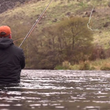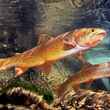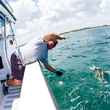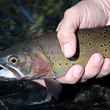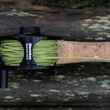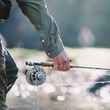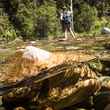RIO announced yesterday three additions to its lineup for the Skagit segment of the spey world. Included is an all new floating head, which RIO is calling the Skagit Max. The Skagit Max will be available in both standard and short versions, with the short version intended for use with shorter (sub 13') spey rods and switch rods. Joining the two new Skagit Max lines is another new head called the iShort, which -- while not dubbed the iFlight Short -- is presumably a version of RIO's existing iFlight intermediate Skagit head intended for use with shorter spey and switch rods.
RIO is highlighting its ConnectCore technology as the driving force behind the new lines. In their press release, RIO notes that their "unique ConnectCore results in a fly line with only about six percent stretch as opposed to the standard 28-32 percent stretch. This ultra-low stretch makes a line much more dynamic to spey cast with helping anglers gain distance through more instinctive timing and better loading. It also enhances sensitivity to detect subtle takes, avoid snags when fishing deep and allows for fast, efficient hook sets."




